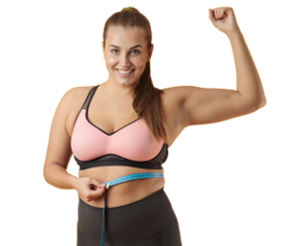What’s Bugging You?
Probiotics
December 14, 2016
An estimated 100 trillion microorganisms representing more than 500 different species inhabit every normal, healthy bowel. Gut-dwelling bacteria keep pathogens in check, aid digestion and nutrient absorption and contribute to immune function.
There have been many studies on probiotics that indicate numerous health benefits including stimulation of mucosal immunity; reduction of inflammatory or allergic reactions; reduction of blood cholesterol; anti-colon cancer effects; and clinical reduction of atopic dermatitis, diarrhea and constipation.1
Some digestive disease specialists are recommending probiotics for gastrointestinal disorders that do not respond well to conventional medicine, such as irritable bowel syndrome and Chrohn’s disease. Because these disorders are so frustrating to treat, many people are utilizing probiotics as a method of treatment. Clinical studies have also shown that probiotic therapy may delay the development of allergies in children, and treat and prevent vaginal and urinary infections in women.2
Considering the impressive reputation that probiotics is generating, it is not surprising that there continues to be considerable interest in their use as biotherapeutic agents. In addition, consumers are becoming increasingly savvy as to the link between diet and health and the fact that most probiotic containing foods and supplements are perceived as safe and natural, the global demand for these is on the increase.2
Why probiotics are often needed
Unfortunately, there is a plethora of factors in modern living that destroy gut bacteria. One of the biggest culprits is the indiscriminate use of antibiotics. While antibiotics can and should be used when necessary, the consequence of their regimen is the destruction of all bacteria in the body – good and bad alike. Most consumers do not make the necessary efforts to restore the good bacteria when the course of treatment ends.
Other medications such as anti-depressants, benzodiazepines and sleeping pills also interfere with gut microflora. SSRIs divert serotonin from the digestive track to the brain creating chemical imbalance in the gut. Gut receptors are sedated by these chemicals causing digestive disruption and constipation.
NSAIDs can promote stomach and intestinal bleeding as well as increase the permeability of the entire GI tract. When the GI tract is more permeable, larger proteins, bacteria, and toxins are able to enter the bloodstream.
Humans are increasingly being exposed to toxins through pesticides, herbicides, food additives, medical/dental procedures and pollution.
The use of antibacterial soaps, chlorinated drinking water and sterilized foods (pasteurization) has also destroyed naturally occurring beneficial bacteria.
Probiotics─vital for women’s health
Beneficial bacteria colonize in the urinary tract and vagina as well giving women a particular need for healthy digestive flora. The particular types of bacteria found there belong to the Lactobacillus species, as well as the strain Bacillus coagulans. All of these bacteria are prolific producers of lactic acid, which helps to keep the pH level of the vagina and urinary tract slightly acidic. Yeast and other undesirable bacteria do not thrive in an acidic environment. If these bacterial environments become unbalanced, the unwanted bacteria begin to multiply causing yeast infection, bacterial vaginosis or urinary tract infection. Interestingly, when women suffer from one of these infections, the common remedy is antibiotics. They kill all of the bacteria present, including the desirable bacteria, and the stage is set for another potential bout of bacterial imbalance.
Listening to the second brain
There are two thin layers of more than 100 million nerve cells lining your gastrointestinal tract from esophagus to rectum called the enteric nervous system (ENS). It controls digestion from swallowing to the release of enzymes that break down food to the control of blood flow that helps with nutrient absorption to elimination, according to Jay Pasricha, M.D., director of the Johns Hopkins Center for Neurogastroenterology.3
“The ENS communicate back and forth with our first brain – with profound results,” explains Pasricha. “It may trigger big emotional shifts experienced by people coping with IBS and functional bowel problems. Researchers are finding evidence that irritation in the gastrointestinal system may send signals to the central nervous system that trigger mood changes.”
This may be why people with certain gastrointestinal disorders also suffer from depression and anxiety. Treating the gut first (with probiotics) may be the best available route to improve all of the symptoms of digestive disorders, including psychological implications.
The use of Probiotic supplements is expanding dramatically as our understanding of how probiotics work grows and as we identify which strains are effective for specific conditions. When consumers behold the vast sea of probiotic choices, it is important that they understand how probiotics work, how they get into the gut and what factors to look for that hold the best chance for maximum efficacy.
Successful colonization depends on delivery
There is a multitude of delivery systems available in the distribution of probiotics. Because they are live organisms, unless they reach their destination in the lower bowel and thrive, they have no discernable value to the host. Probiotics must adhere to the intestinal cells and be able to co-aggregate as part of the natural gut flora. This presents challenges in both the pharmaceutical and commercial products which must deliver adequate amounts of viable bacteria and provide protection in the harsh gastric environment.4
Studies have shown that at least 10-20 billion viable cells must reach the intestine for health benefits to be achieved. To include additional billions CFU does not increase efficacy; the number of billions CFU that survive obstacles like stomach acid, bile, hydration / activation and other environmental issues are what makes a probiotic supplement effective. Examples of pharmaceutical formulations for the delivery of probiotics currently include, among others, beads, capsules, and tablets. Some reports claim each method has merit although closer examination shows some vulnerability in even proprietary delivery systems.
Tablets and capsules are easier to administer to patients and due to their increased storage stability over liquid preparations and are often the preferred dosage forms for the delivery of probiotics to the human body.5 The concern with tablets, however, is the heat production that occurs during compression with temperatures reaching up to 60°C, which can destroy bacteria that are most viable at their optimal temperatures. The survival of encapsulated bacteria is found to be dependent on the concentration of the alginate coat with the higher concentration leading to a larger amount of viable bacteria surviving.6 One proprietary bead formulation claims a “revolutionary encapsulating process” in which the triple layer softgel is supposedly protected from the acid in your stomach allowing more of the beneficial flora to pass into your digestive tract. Some consumers have been dissatisfied with their results using this method, however, and some may be hesitant to use supplements that include additives such as fish gelatin.
With all the factors affecting probiotic therapy, it has been shown to be beneficial to have formulations that incorporate both pharmaceutical and commercial food based ingredients together to have an effective dosage form for the delivery of probiotics.7
One proprietary delivery system stands out when compared to other systems currently on the market. It utilizes a three-featured process to insure better survival of the probiotic colonies inside. First, the probiotic bacteria are enrobed by an extract of brown seaweed called complex marine polysaccharides. The final powder is encapsulated. When the capsule comes into contact with stomach acid, the capsule is dissolved and the complex marine polysaccharides will form a secondary internal capsule protecting the living probiotic cells from the acid. Second, an all-natural buffering system helps to support the in-transit digestive environmental condition. The third feature of this delivery system is the researched and documented strains of probiotics used. The selected strains are naturally equipped to handle exposure to some common environmental elements that can make survival difficult.
There is no doubt that probiotics are a key to optimum health for humans of all ages. Consumers do well to educate themselves on the best available research showing what probiotics can do for them and how they are best utilized and delivered. Always look for details on a product that pertain to these important features. A company that is willing to explain how their product works most likely has a product that will, indeed, work.
###
- https://www.ncbi.nlm.nih.gov/pmc/articles/PMC1393245/
- http://www.health.harvard.edu/vitamins-and-supplements/health-benefits-of-taking-probiotics
- http://www.hopkinsmedicine.org/health/healthy_aging/healthy_body/the-brain-gut-connection
- https://www.ncbi.nlm.nih.gov/pmc/articles/PMC3909163/
- Dash SK, Spreen AN, Ley BM. Health benefits of probiotics. Temecula: BL Publications; 1999.
- Chandramouli V, Kailasapathy K, Peiris P, Jones M. An improved method of microencapsulation and its evaluation to protect Lactobacillus spp. in simulated gastric conditions. J Microbiol Methods. 2004;56(1):27–35
- https://www.ncbi.nlm.nih.gov/pmc/articles/PMC3909163/#CR102







